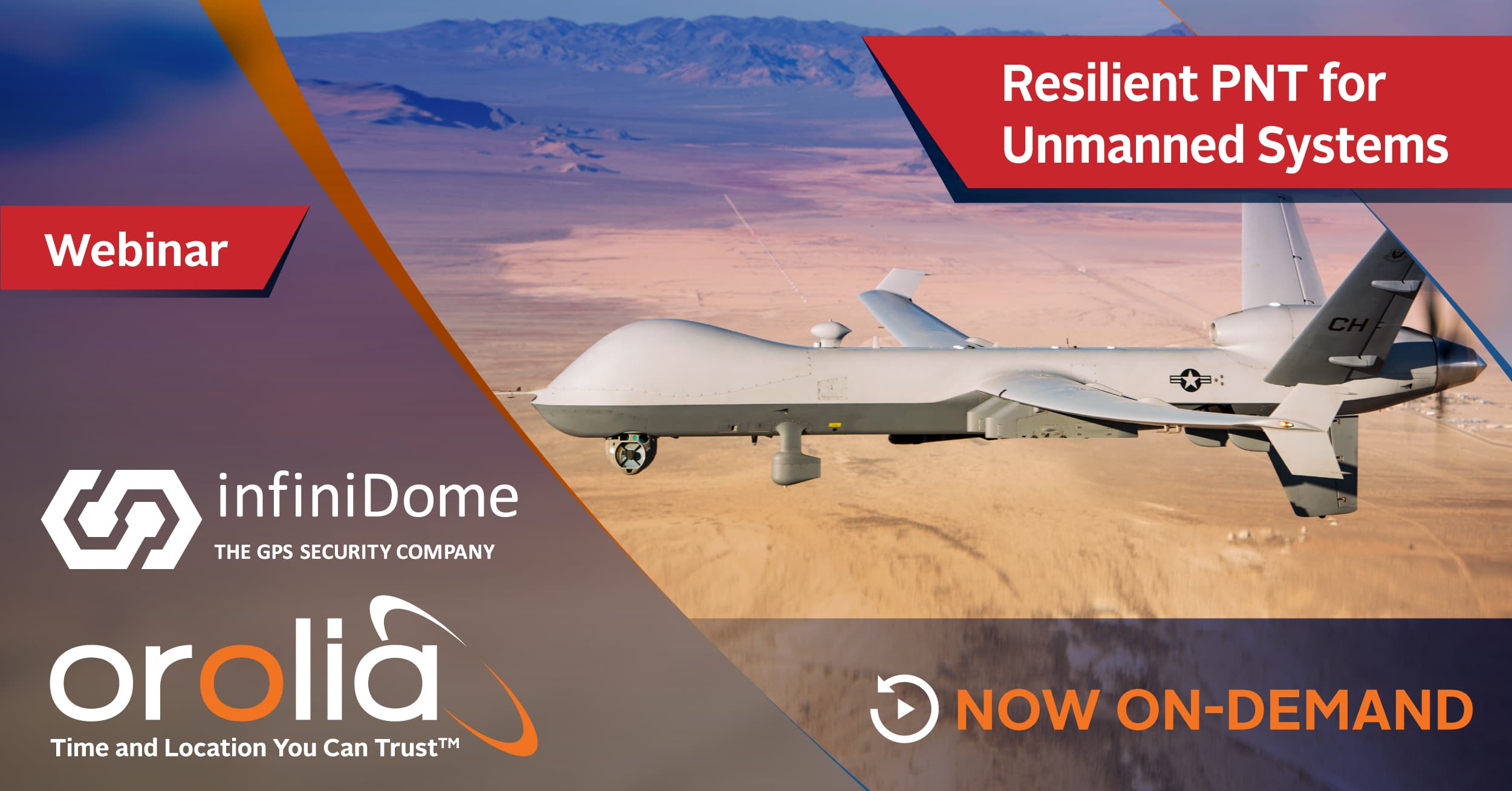Demand for unmanned systems is growing exponentially across defense and civil/commercial organizations, for applications ranging from military missions and intelligence surveillance to border security and precision agriculture.
Resilient Positioning, Navigation and Timing (PNTPosition, Navigation, and Timing: PNT and map data combine to create the GPS service.) data and GPSGlobal Positioning System is a navigation satellite system. See also/GNSS signals are critical for unmanned systems in order to successfully pilot and control aircraft, vehicle and vessel onboard systems.
PNT also plays an essential role in giving context to data collected by unmanned systems, through precise time stamps and geo-stamps. The accuracy of this PNT data is critical for mission success, often requiring geo-stamp accuracy within a few centimeters and time stamps within nanoseconds.
This webinar will review the role of PNT, unmanned system ecosystem risks caused by GNSSGlobal navigation satellite system (GNSS): A general term describing any satellite constellation that provides positioning, navigation, and timing (PNT) services on a global or regional basis. See also vulnerabilities, and available technologies that can ensure greater resiliency, protection and safety for unmanned missions. It will also consider how industry can support agencies such as FAAThe Federal Aviation Administration is the regulatory transportation agency in the Unites States responsible for regulating all aspects of civil aviation in the US., DHS and DOT to ensure that unmanned systems operating environments are not compromised by GNSS interference or attacks.
Watch Now:
Topics include:
The role of resilient Positioning, Navigation and Timing (PNT) in unmanned systems
Common DHS and DOT government applications for unmanned systems
Vulnerabilities and threats to unmanned operations
Challenges associated with protecting unmanned system assets and flight zones
Industry perspective on available Resilient PNT technologies to protect unmanned systems
Panelists:
Dana Goward, President, Resilient Navigation & Timing Foundation
James Platt, Chief, Strategic Defense Initiatives, U.S. Department of Homeland Security
Karen Van Dyke, Director, Positioning, Navigation and Timing U.S. Department of Transportation
Omer Sharar, CEO, infiniDome
John Fischer, VP Advanced R&D, Orolia

